 W
WThe Ampex 601 was a portable, analog, reel-to-reel tape recorder produced by The Ampex Corporation from the mid-1950s through the 1960s. Ampex manufactured a single-channel model and dual-channel version. The suitcase-sized, 26 lb. unit was designed for the professional recording applications. It recorded to ¼-inch tape on 5-inch or 7-inch reels.
 W
WThe Ampex ATR-100 is a multitrack tape recorder, designed by Ampex Corporation, of Redwood City, California, United States. It was introduced at the Spring 1976 AES Conference in Los Angeles, and was geared towards the ultra high end studio market. The original versions were designed specifically as a stereo or quadraphonic mixdown and mastering deck. It has gained a reputation in the recording industry as the most accurate analogue tape recorder ever to be produced.
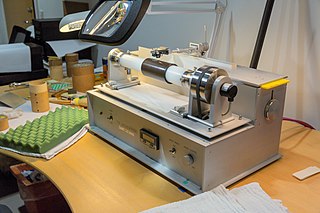 W
WThe Archéophone is a modern, electric version of the phonographs and ediphones from the 19th and early 20th century. It is specifically designed to transfer phonograph cylinders and other cylinder formats to modern recording media.
 W
WBBC Research & Development is the technical research department of the BBC.
 W
WThe studio practices of the Beatles evolved during the 1960s, and in some cases, influenced the way popular music was recorded. Some of the effects they employed were sampling, artificial double tracking (ADT) and the elaborate use of multitrack recording machines. They also used classical instruments on their recordings and guitar feedback. The group's attitude toward the recording process was summed up by Paul McCartney: "We would say, 'Try it. Just try it for us. If it sounds crappy, OK, we'll lose it. But it might just sound good.' We were always pushing ahead: Louder, further, longer, more, different."
 W
WBinaural recording is a method of recording sound that uses two microphones, arranged with the intent to create a 3-D stereo sound sensation for the listener of actually being in the room with the performers or instruments. This effect is often created using a technique known as "dummy head recording", wherein a mannequin head is outfitted with a microphone in each ear. Binaural recording is intended for replay using headphones and will not translate properly over stereo speakers. This idea of a three dimensional or "internal" form of sound has also translated into useful advancement of technology in many things such as stethoscopes creating "in-head" acoustics and IMAX movies being able to create a three dimensional acoustic experience.
 W
WBlumlein pair is the name for a stereo recording technique invented by Alan Blumlein for the creation of recordings that, upon replaying through headphones or loudspeakers, recreate the spatial characteristics of the recorded signal.
 W
WIn telecommunication and signal processing, companding is a method of mitigating the detrimental effects of a channel with limited dynamic range. The name is a portmanteau of the words compressing and expanding, which are the functions of a compander at the transmitting and receiving end respectively. The use of companding allows signals with a large dynamic range to be transmitted over facilities that have a smaller dynamic range capability. Companding is employed in telephony and other audio applications such as professional wireless microphones and analog recording.
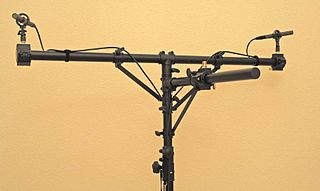 W
WThe Decca Tree is a spaced microphone array most commonly used for orchestral recording. It was originally developed as a sort of stereo A–B recording method adding a center fill. The technique was developed in the early 1950s and first commercially used in 1954 by Arthur Haddy, Roy Wallace, and later refined by engineer Kenneth Ernest Wilkinson and his team at Decca Records, to provide a strong stereo image.
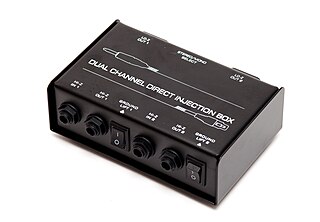 W
WA DI unit is an electronic device typically used in recording studios and in sound reinforcement systems to connect a high-output impedance, line level, unbalanced output signal to a low-impedance, microphone level, balanced input, usually via an XLR connector and XLR cable. DIs are frequently used to connect an electric guitar or electric bass to a mixing console's microphone input jack. The DI performs level matching, balancing, and either active buffering or passive impedance matching/impedance bridging to minimize unwanted noise, distortion, and ground loops. DI units are typically metal boxes with input and output jacks and, for more expensive units, “ground lift” and attenuator switches.
 W
WDictaphone was an American company founded by Alexander Graham Bell that produced dictation machines. It is now a division of Nuance Communications based in Burlington, Massachusetts.
 W
WA dictation machine is a sound recording device most commonly used to record speech for playback or to be type into print. It includes digital voice recorders and tape recorder.
 W
WA dictation machine is a sound recording device most commonly used to record speech for playback or to be type into print. It includes digital voice recorders and tape recorder.
 W
WThe Distortion of Sound is a 2014 advertisement for Harman produced by Vice Media. The advertisement presents itself as a documentary on the decline of sound quality in music distributed with lossy compression algorithms. The ad features paid interviews with vocalists, guitarists, producers, writers, rappers, film composers, mixing engineers, mixers, music journalists, acoustic researchers, loudspeaker engineers and chief engineers—including such artists as Mike Shinoda of Linkin Park, Slash, Quincy Jones, Snoop Dogg and Steve Aoki.
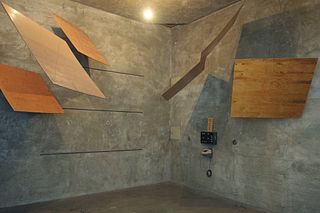 W
WAn echo chamber is a hollow enclosure used to produce reverberation, usually for recording purposes. For example, the producers of a television or radio program might wish to produce the aural illusion that a conversation is taking place in a large room or a cave; these effects can be accomplished by playing the recording of the conversation inside an echo chamber, with an accompanying microphone to catch the reverberation. Nowadays effects units are more widely used to create such effects, but echo chambers are still used today, such as the famous echo chambers at Capitol Studios.
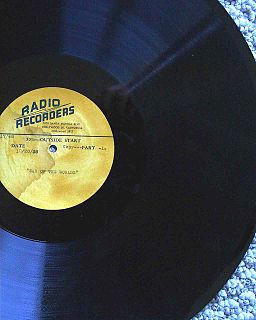 W
WElectrical transcriptions are special phonograph recordings made exclusively for radio broadcasting, which were widely used during the "Golden Age of Radio". They provided material—from station-identification jingles and commercials to full-length programs—for use by local stations, which were affiliates of one of the radio networks.
 W
WHeil Sound, Ltd. is an American manufacturer of professional audio equipment based in Fairview Heights, Illinois. The company was founded by Bob Heil in 1966, and is well known for inventions in live sound, the Heil Talk Box and a variety of high-quality microphones and headsets for use in commercial and amateur radio. Heil Sound is also the only manufacturer to be invited to exhibit at the Rock and Roll Hall of Fame.
 W
WA disc cutting lathe is used for transferring a sound recording to disc for the production of vinyl records. The cutting stylus of the lathe's cutter head engraves the music groove into the blank lacquer-coated disc which is used as the master to produce matrices from which the record is pressed. For all intents and purposes, the finished vinyl record is a facsimile of this master disc.
 W
WMagnetophon was the brand or model name of the pioneering reel-to-reel tape recorder developed by engineers of the German electronics company AEG in the 1930s, based on the magnetic tape invention by Fritz Pfleumer. AEG created the world's first practical tape recorder, the K1, first demonstrated in Germany in 1935 at the Berlin Radio Show.
 W
WA mechanical filter is a signal processing filter usually used in place of an electronic filter at radio frequencies. Its purpose is the same as that of a normal electronic filter: to pass a range of signal frequencies, but to block others. The filter acts on mechanical vibrations which are the analogue of the electrical signal. At the input and output of the filter, transducers convert the electrical signal into, and then back from, these mechanical vibrations.
 W
WA music store or musical instrument store is a retail business that sells musical instruments and related equipment and accessories. Some music stores provide additional services for a fee, such as music lessons, instrument or equipment rental, or repair services.
 W
WThe Neve 8078 was the last of the "80 series" hand-wired analogue mixing consoles designed and manufactured by Neve Electronics, founded in 1961 by the English electronics engineer Rupert Neve, for high-end recording studios during the 1970s. Some were custom built for major studios like CBS Sony.
 W
WNHK Science & Technical Research Laboratories, headquartered in Setagaya, Tokyo, Japan, is responsible for technical research at NHK, Japan's public broadcaster.
 W
WNICE Ltd. is an Israel-based company, specializing in telephone voice recording, data security, and surveillance, as well as systems that analyze recorded data.
 W
WThe phonautograph is the earliest known device for recording sound. Previously, tracings had been obtained of the sound-producing vibratory motions of tuning forks and other objects by physical contact with them, but not of actual sound waves as they propagated through air or other media. Invented by Frenchman Édouard-Léon Scott de Martinville, it was patented on March 25, 1857. It transcribed sound waves as undulations or other deviations in a line traced on smoke-blackened paper or glass. Intended solely as a laboratory instrument for the study of acoustics, it could be used to visually study and measure the amplitude envelopes and waveforms of speech and other sounds, or to determine the frequency of a given musical pitch by comparison with a simultaneously recorded reference frequency.
 W
WA pop filter, pop shield or pop screen is a noise protection filter for microphones, typically used in a recording studio. It serves to reduce or eliminate popping sounds caused by the mechanical impact of fast-moving air on the microphone from plosives during recorded speech and singing.
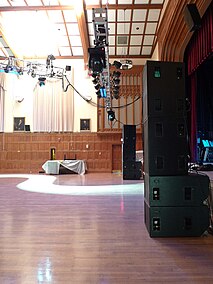 W
WA professional audio store is a retail business that sells, and in many cases rents, sound reinforcement system equipment and PA system components used in music concerts, live shows, dance parties and speaking events. This equipment typically includes microphones, power amplifiers, electronic effects units, speaker enclosures, monitor speakers, subwoofers and audio consoles (mixers). Some professional audio stores also sell sound recording equipment, DJ equipment, lighting equipment used in nightclubs and concerts and video equipment used in events, such as video projectors and screens. Some professional audio stores rent "backline" equipment used in rock and pop shows, such as stage pianos and bass amplifiers. While professional audio stores typically focus on selling new merchandise, some stores also sell used equipment, which is often the equipment that the company has previously rented out for shows and events.
 W
WThe Roland RE-201, commonly known as the Space Echo, is an audio effects unit that produces delay and reverb effects. It was produced by the Roland Corporation from 1974 to 1990.
 W
WAn audio tape recorder, tape deck, or tape machine is a sound recording and reproduction device that records and plays back sounds usually using magnetic tape for storage. In its present-day form, it records a fluctuating signal by moving the tape across a tape head that polarizes the magnetic domains in the tape in proportion to the audio signal. Tape-recording devices include the reel-to-reel tape deck and the cassette deck, which uses a cassette for storage.
 W
WA tape transport is the collection of parts of a magnetic tape player or recorder that move the tape and play or record it. Transport parts include the head, capstan, pinch roller, tape pins, and tape guide. The tape transport as a whole is called the transport mechanism.
 W
WValdemar Poulsen was a Danish engineer who made significant contributions to early radio technology. He developed a magnetic wire recorder called the telegraphone in 1898 and the first continuous wave radio transmitter, the Poulsen arc transmitter, in 1903, which was used in some of the first broadcasting stations until the early 1920s.
 W
WThe United Kingdom patent 394325 'Improvements in and relating to Sound-transmission, Sound-recording and Sound-reproducing Systems' is a fundamental work on stereophonic sound, written by Alan Blumlein in 1931 and published in 1933. The work exists only in the form of a patent and two accompanying memos addressed to Isaac Shoenberg. The text is exceptionally long for a patent of the period, having 70 numbered claims. It contains a brief summary of sound localization theory, a roadmap for introduction of surround sound in sound film and recording industry, and a description of Blumlein's inventions related to stereophony, notably the matrix processing of stereo signals, the Blumlein stereo microphone and the 45/45 mechanical recording system.
 W
WThe Volta Laboratory and the Volta Bureau were created in Georgetown, Washington, D.C. by Alexander Graham Bell.